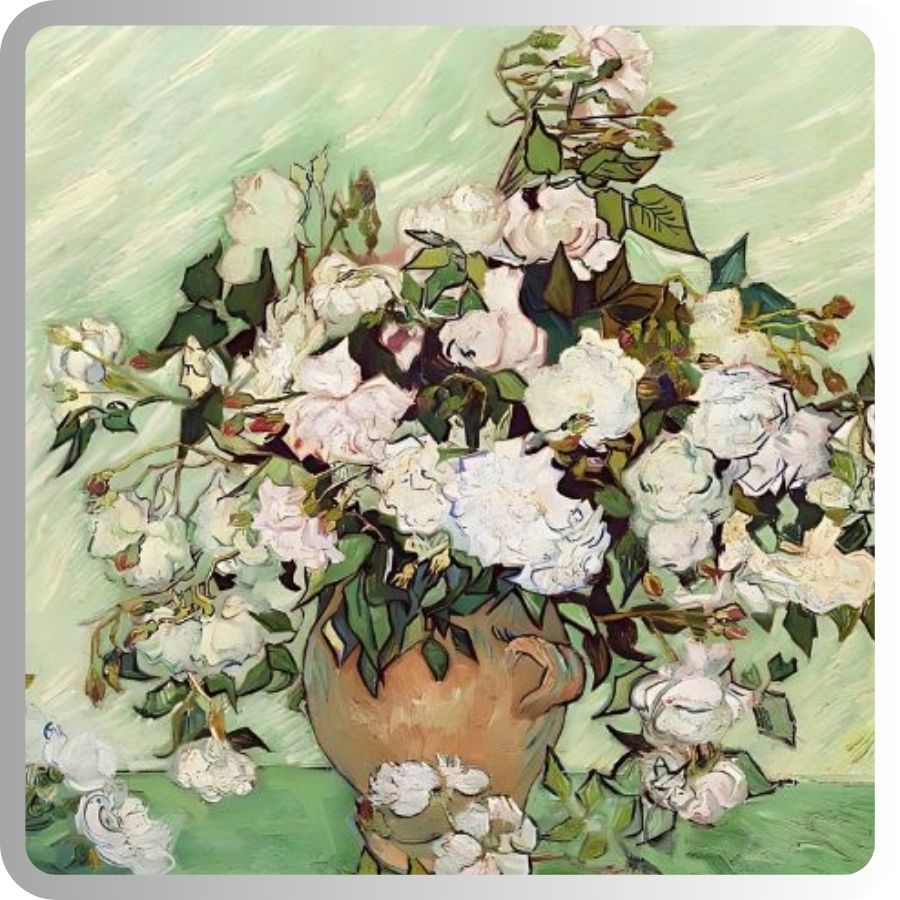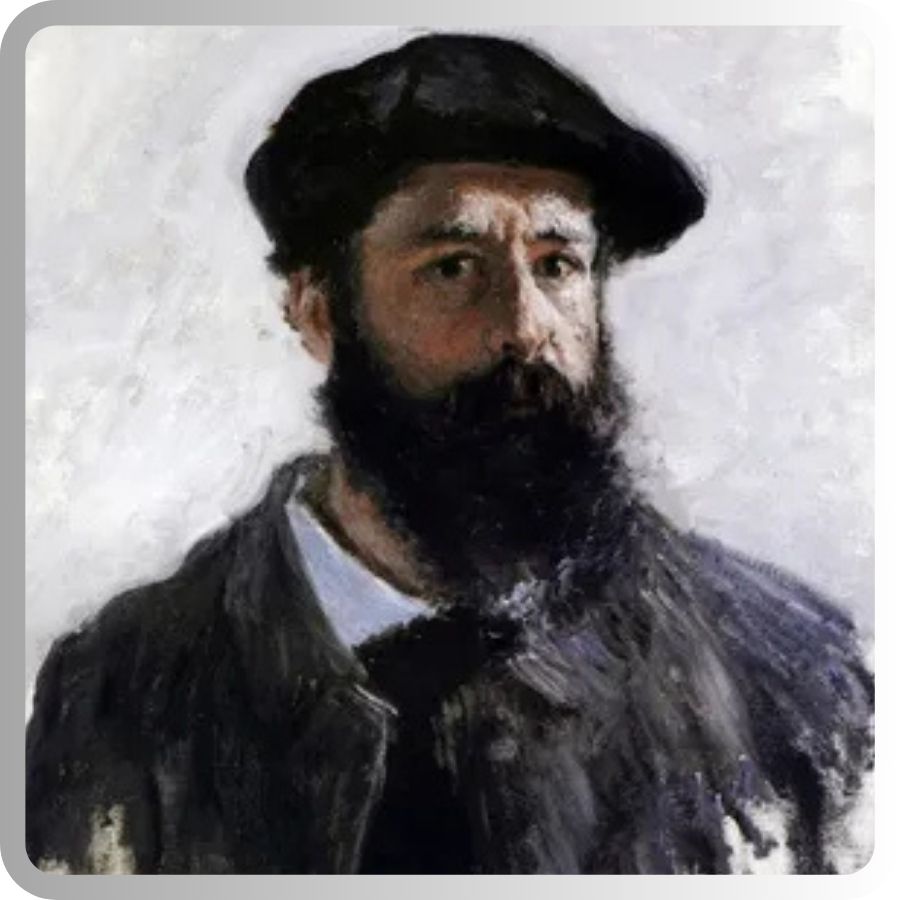What is Impressionism?
Impressionism is an art movement that began in the late 19th century. It marked a shift from traditional, detailed approaches to a focus on light, color, and immediate impressions.
Characteristics:
-
Small, thin brush strokes.
-
Open compositions with a sense of movement.
-
Emphasis on the changing qualities of light.
-
Subjects often include nature, gardens, and everyday scenes.
Impressionist painters created works that felt spontaneous, focusing on the mood or atmosphere rather than detailed accuracy, allowing the artist to express personal creativity. They used lighter color palettes and looser techniques to evoke feelings rather than strict representations.
Why Impressionism Matters
Impressionism invites us to see the world differently. It highlights the beauty of light, color, and how they interact with everyday subjects. The focus is on capturing the essence of a moment, creating art that feels alive and emotional.
What is Impressionist Painting?
Impressionist painting is a revolutionary style of art that emerged in the late 19th century, characterized by its emphasis on capturing the fleeting moments of light and color. Artists like Claude Monet sought to break away from traditional, detailed approaches to painting. Instead, they focused on creating a sense of movement and immediacy in their works. Impressionist paintings often feature soft, blurred edges and a vibrant interplay of light and color, rather than precise details. This approach allows the viewer to experience the essence of a scene, evoking emotions and memories through the art.
Famous Artists of Impressionism
Impressionism introduced the world to groundbreaking artists whose work transformed modern art. Let’s explore the contributions of some of the most iconic figures in this revolutionary movement.
Claude Monet: The Father of Impressionism
Claude Monet revolutionized art with his focus on light, atmosphere, and natural beauty. His works, such as Water Lilies and Japanese Footbridge, exemplify his mastery of vibrant brushstrokes and his ability to capture reflections and the interplay of light and shadow.
Key Artworks
-
Water Lilies
-
Japanese Footbridge
-
Impression, Sunrise
For art enthusiasts, Monet Paint by Numbers Kits provide a way to recreate his masterpieces while appreciating his techniques. Painting scenes from Monet's beloved garden at Giverny offers an immersive way to connect with his artistic vision.
To learn more about Claude Monet and his amazing artworks, read our blog article about the most popular Monet paintings.
Edgar Degas: Movement and Form
Edgar Degas brought dynamic movement to Impressionism, focusing on the grace and energy of ballet dancers. His ability to depict motion and emotion made his works iconic.
Key Artworks
-
The Ballet Class
-
L’Absinthe
-
Dancers in the Wings
Pierre-Auguste Renoir: Life and Light
Pierre-Auguste Renoir captured the joy of social gatherings and intimate moments. His canvases, known for their warm light and vivid colors, often depicted people in natural settings, celebrating life’s simple pleasures.
Most famous paintings
-
Dance at Le Moulin de la Galette
-
Luncheon of the Boating Party
-
The Swing
Édouard Manet: Bold Modernity
Édouard Manet bridged Realism and Impressionism with groundbreaking works that challenged conventions.
Key Paintings
-
Luncheon on the Grass
-
Olympia
-
Music in the Tuileries
-
Flowers in a Crystal Vase
Exploring Manet through paint by numbers allows you to engage with his bold techniques and innovative approach to modern art.
Camille Pissarro: The Father of Impressionism
Camille Pissarro was instrumental in shaping the movement. His landscapes and urban scenes, known for their experimental light and color, continue to influence artists today.
Key Paintings
-
The Boulevard Montmartre at Night
-
Hay Harvest at Éragny
-
Red Roofs, Corner of a Village, Winter
Paul Cézanne: The Architect of Modern Art
Paul Cézanne’s unique focus on shapes and structure laid the groundwork for modern art. His layered brushstrokes and exploration of light and form are both challenging and rewarding to replicate in Cézanne-themed paint by numbers kits.
Key Paintings
-
The Card Players
-
Mont Sainte-Victoire
-
Still Life with Apples and Oranges
Painting Cézanne’s works invites you to delve into the interplay of color and texture, offering a glimpse into the evolution of art techniques.
What the Impressionist Paint by Numbers Kits contain?
These kits are perfect for anyone starting out in the world of painting. Each kit comes with a numbered quality canvas, which helps you understand where to paint each color. Alongside the canvas, you'll find a set of acrylic paints. These paints are easy to use and vibrant, adding beauty to your masterpiece. Additionally, the kit includes a set of paintbrushes tailored for various strokes and details.
You can order an optional wooden DIY frame or get the canvas already framed.
Overall, these paint by number kits are an excellent way for beginners, but also for experienced artists to step into the world of Impressionist painting, offering all the basic tools needed to create a beautiful painting.
Impressionism and Paint by Numbers
Exploring impressionism through paint by number kits gives you a chance to connect with this unique style. By following the guided process, you can recreate the fluidity and vibrancy of impressionist art, one brushstroke at a time. It’s a creative way to experience the joy of capturing impressions and bringing them to life on canvas.
Benefits of Paint by Numbers
Paint by numbers kits offer a unique and accessible way to experience the joy of painting, even for those with little to no artistic experience. By following the simple instructions and numbered guide, you can create a beautiful and professional-looking painting without the need for extensive artistic training. These kits provide a sense of relaxation and stress relief, as the repetitive motion of painting can be meditative and calming. Whether you’re looking to unwind after a long day or explore a new hobby, paint by numbers kits make it easy to create stunning art.
Choosing the Right Kit
When selecting a paint by numbers kit, it’s essential to consider a few key factors. First, choose a kit that features a design or image that resonates with you, as this will make the painting process more enjoyable. Next, consider the level of difficulty and the number of colors included in the kit. If you’re a beginner, look for a kit with a smaller number of colors and a simpler design. Finally, consider the quality of the kit, including the type of canvas and paints used. Premium kits, such as those offered by Masterpiece By Numbers, feature high-quality materials and licensed artwork, ensuring a professional-looking finish.
What Do Our Paint by Numbers Kits Contain?
The Impressionist Paint by Numbers Kits provide everything you need to start painting with ease and confidence. Here’s what’s included:
-
Numbered Canvas: A high-quality canvas with clearly marked sections to guide color placement.
-
Acrylic Paints: Pre-mixed, vibrant colors designed to bring your masterpiece to life.
-
Paint brushes: A variety of brushes tailored for different strokes and fine details.
-
Simple instructions: Picture with a colorguide will help you create your masterpiece
-
Framing Options: Choose between an optional wooden DIY frame or an already framed canvas for convenience.
These kits are perfect for beginners and experienced artists alike, offering all the essential tools to create stunning Impressionist-inspired art.
Other famous artists canvas kits from Painting by Numbers Shop
At Painting by Numbers Shop, you have the unlimited possibilities to start your journey wtih the works of Gustav Klimt or the famous Alphonse Mucha. These paint by number kits offer a window into the world of wonders, inviting you to recreate renowned abstract art and timeless masterpieces.
For lovers of classical art, our selection also includes Leonardo da Vinci and Michelangelo themed kits. These aren't just about painting; they're a journey through the Renaissance, bringing its essence right to your living space.
Whether it's Klimt's golden splendor or Mucha's intricate Art Nouveau style, each kit is a portal to understanding the strokes and genius of these great artists. As you paint, you're not only creating art but also immersing yourself in diverse artistic movements and their impact on history.









